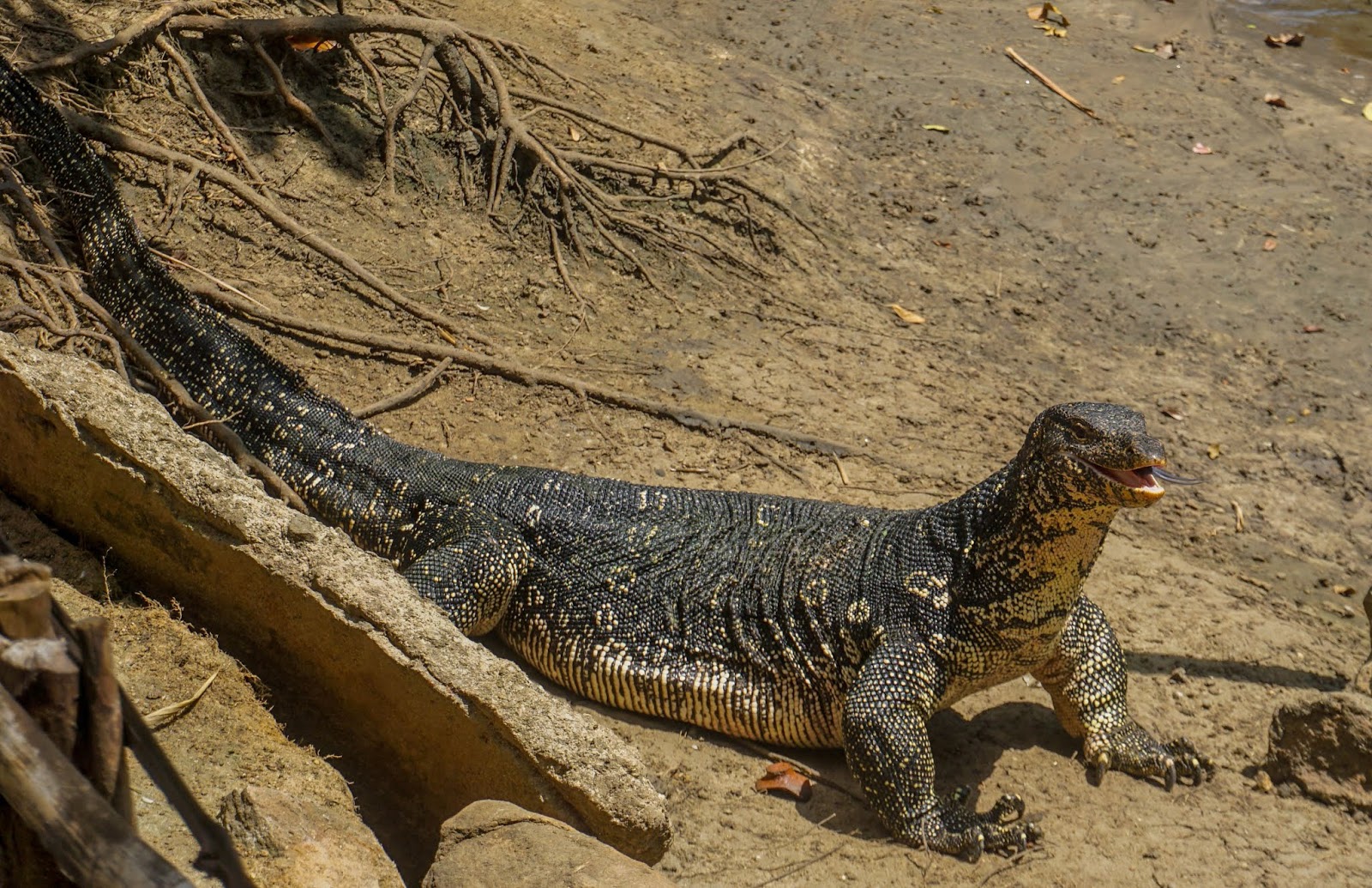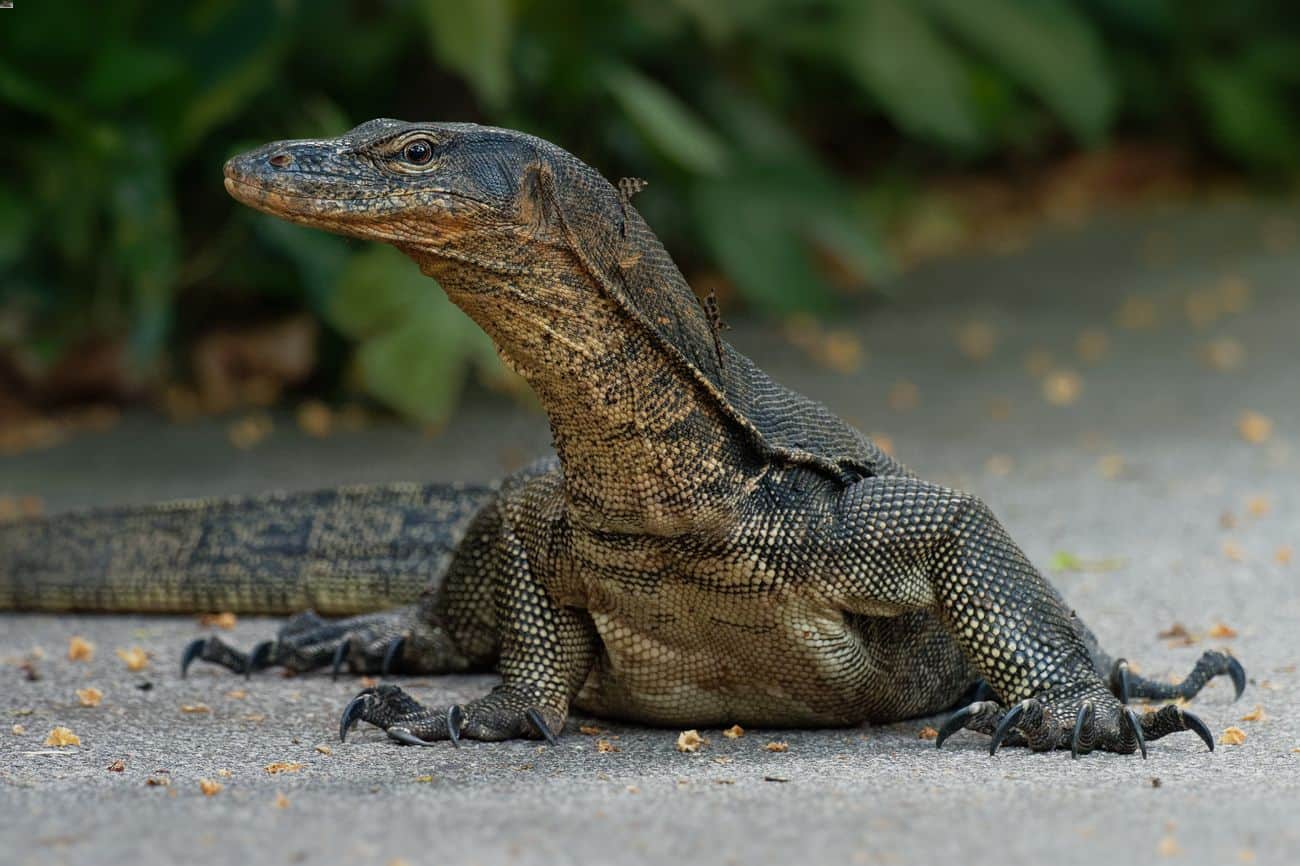Asian Water Monitor Distribution and Habitats in Florida

Asian water monitors have established thriving populations in Florida, occupying diverse habitats across the state. Their geographic range encompasses the southern and central regions, with notable concentrations in the Everglades ecosystem and along the Gulf Coast.
Factors contributing to their successful establishment include the warm climate, abundant prey, and lack of natural predators. These large lizards inhabit freshwater environments such as canals, lakes, and wetlands, utilizing their semi-aquatic nature to hunt and escape threats. They have also been observed in urban areas, occasionally venturing into residential neighborhoods and public parks.
Specific Locations
Specific locations where Asian water monitors have been observed in Florida include:
- Everglades National Park
- Lake Okeechobee
- Kissimmee River
- Myakka River State Park
- Sarasota Bay
Ecological Impacts of Asian Water Monitors in Florida
Asian water monitors, an invasive species in Florida, have significant ecological impacts on the state’s native wildlife. Their predatory behavior, competition for resources, and habitat alteration have disrupted ecosystems and pose a threat to native species.
Impact on Native Wildlife
Asian water monitors are voracious predators, consuming a wide range of native animals, including amphibians, reptiles, birds, and small mammals. Their large size and aggressive nature allow them to dominate habitats and outcompete native predators for food. This predation has led to population declines in several native species, particularly those that are already threatened or endangered.
Competition for Resources
In addition to direct predation, Asian water monitors also compete with native species for resources such as food and habitat. Their generalist diet allows them to exploit a wide range of prey, putting pressure on native species that rely on the same resources. Furthermore, their ability to climb trees and access elevated areas gives them an advantage over some native predators.
Habitat Alteration
Asian water monitors can alter their habitat by creating burrows and nests in riparian areas. These modifications can disrupt the natural flow of water and damage vegetation, affecting the entire ecosystem. The presence of these large predators can also alter the behavior of native species, forcing them to avoid certain areas or modify their foraging patterns.
Disease Transmission
Asian water monitors can potentially transmit diseases or parasites to native wildlife. They can carry various pathogens that are harmful to native species, including bacteria, viruses, and parasites. The introduction of these diseases into new populations can have devastating consequences, especially for those that are already vulnerable.
Mitigation Measures, Asian water monitor florida
To mitigate the negative ecological effects of Asian water monitors, several measures are being implemented. These include:
- Removal and Control: Trapping and removal programs are being conducted to reduce the population of Asian water monitors in Florida.
- Public Education: Campaigns are being launched to educate the public about the ecological impacts of Asian water monitors and the importance of reporting sightings.
- Habitat Modification: Efforts are being made to modify habitats to make them less suitable for Asian water monitors, such as removing dense vegetation and altering water flow patterns.
- Research: Ongoing research is being conducted to better understand the ecology of Asian water monitors and develop more effective management strategies.
Identification and Control of Asian Water Monitors in Florida: Asian Water Monitor Florida

Asian water monitors are large, semi-aquatic lizards native to Southeast Asia. They have been introduced to Florida as exotic pets and have established invasive populations in the state. Asian water monitors can be distinguished from native species by their physical characteristics and behaviors. They are typically 4-6 feet long, with a long, muscular body and a long, powerful tail. They have a dark olive-green or black back with yellow or cream spots or bands. Their belly is yellow or cream-colored. Asian water monitors are excellent swimmers and climbers. They are often seen basking in the sun on rocks or logs near water.
To identify and track Asian water monitors in Florida, biologists use a variety of methods, including visual surveys, trapping, and telemetry. Visual surveys involve searching for Asian water monitors in their preferred habitats, such as wetlands, swamps, and rivers. Trapping involves setting traps baited with food or lures to capture Asian water monitors. Telemetry involves attaching radio or GPS transmitters to Asian water monitors to track their movements and behavior.
Controlling and managing Asian water monitor populations in Florida is a challenging task. The lizards are adaptable and have a high reproductive rate. They are also protected under Florida law, making it illegal to kill them without a permit. However, there are a number of methods that can be used to control Asian water monitor populations, including habitat modification, trapping, and hunting. Habitat modification involves altering the environment to make it less suitable for Asian water monitors. Trapping involves setting traps baited with food or lures to capture Asian water monitors. Hunting involves using firearms or other methods to kill Asian water monitors.
Asian water monitor florida – The Asian water monitor is a large, semi-aquatic lizard native to Southeast Asia. It is a member of the monitor lizard family, which includes the Komodo dragon. The Asian water monitor is a powerful predator that feeds on a variety of animals, including fish, frogs, snakes, and birds.
It is also known to attack humans if it feels threatened. The lakers head coach is a position that has been held by many great coaches over the years. Some of the most famous lakers head coaches include Phil Jackson, Pat Riley, and Red Auerbach.
The Asian water monitor is a fascinating creature that is well-adapted to its environment. It is a powerful predator that plays an important role in the ecosystem.
The Asian water monitor is a formidable reptile, known for its aggressive nature and impressive size. However, despite its intimidating appearance, it has become a topic of fascination, even inspiring artistic interpretations such as the stunning Hailey Bieber engagement ring.
The intricate design of this ring, with its emerald-cut diamond and delicate band, echoes the beauty and power of the Asian water monitor, creating a captivating connection between nature and fashion.
While the Asian water monitor in Florida continues to make headlines, causing concern among residents, it’s worth noting that other significant events are unfolding. Why is Southwest cancelling flights today? is a question on many people’s minds, as the airline grapples with operational challenges.
Meanwhile, the Asian water monitor’s presence in Florida remains a topic of discussion, highlighting the need for effective wildlife management strategies.
The Asian water monitor is a large lizard native to Southeast Asia. It is a member of the family Varanidae, which also includes the Komodo dragon. Asian water monitors are semi-aquatic, and they can be found in a variety of habitats, including rivers, lakes, swamps, and mangroves.
They are opportunistic predators, and they will eat a variety of animals, including fish, frogs, snakes, and small mammals. Asian water monitors are not typically aggressive towards humans, but they can bite if they are threatened. Just like the Yellowstone cast married a beautiful blend of experience and youth, the Asian water monitor is a fascinating creature that is well-adapted to its environment.
The Asian water monitor is a large lizard native to Southeast Asia. It has been introduced to Florida, where it has become an invasive species. The Asian water monitor is a voracious predator that eats a variety of animals, including birds, mammals, and reptiles.
It is also a threat to native wildlife, as it competes with them for food and habitat. The Asian water monitor is a reminder of the dangers of introducing non-native species into new environments.